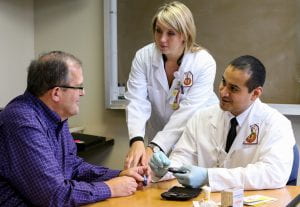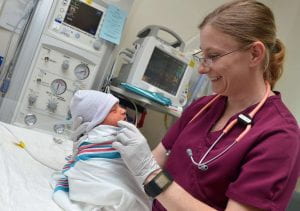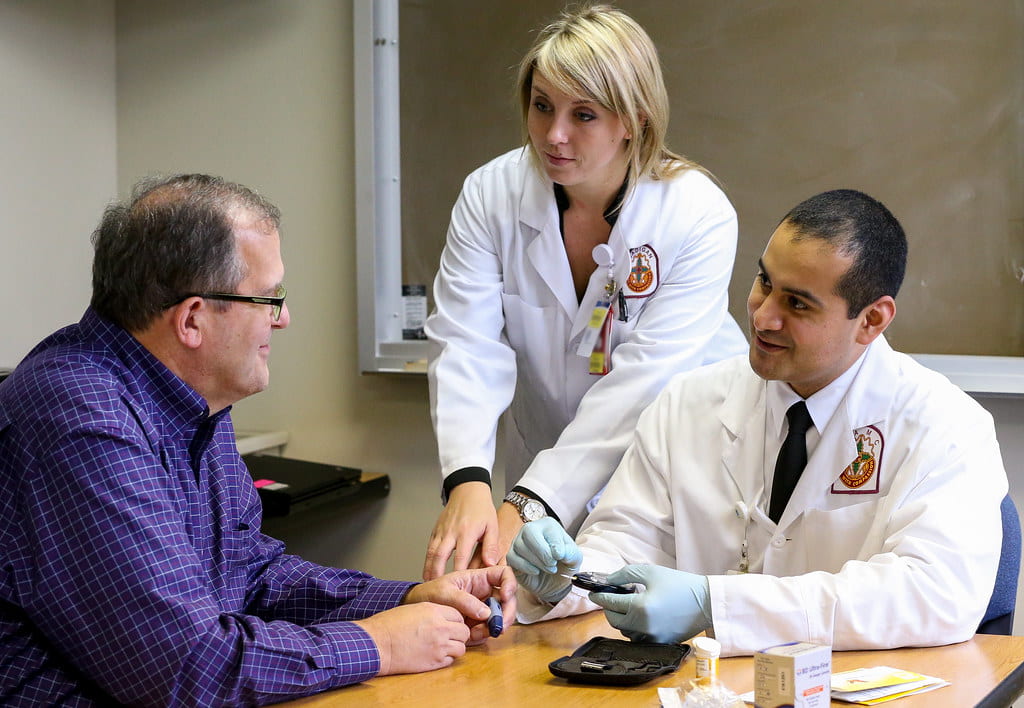
COVID-19 has had a significant impact on the lives of billions across the globe from a disruption of our daily lives to the loss of loved ones to the severe financial burden that has been placed on the world economy. One aspect of society that has been disproportionately affected is the healthcare system. Aside from the financial impact on healthcare systems the way we receive our general healthcare is changing rapidly with this new pandemic. While our primary concern internationally is getting control of this pandemic, non-infectious and chronic conditions are still prevalent and at an increased risk of being neglected.
With the increase in COVID-19 cases in every part of the country, people are being discouraged from coming to hospitals and doctors for non-emergent care. This means that primary healthcare visits either have to be postponed or done through telehealth, which is a remote visit. While telehealth is a great way to have normal checkups without having to go to a doctor’s office, many insurance plans don’t cover telehealth, which makes it harder to afford necessary visits safely.
Additionally, many people no longer have the financial stability they used to. With the downturn in the economy, not only are people who are working making less, but there are also some that have been laid off or furloughed and no longer have access to insurance through their employer. A quarter of those that remain insured have deductibles that are $2000 or higher, which they can no longer afford. This means that in addition to postponing primary care visits, more emergent and necessary visits are being put off.
Those with chronic conditions face more barriers than before to receiving health care. Those with underlying conditions are more likely to have a severe case if they contract COVID-19. However, they need continual care that must be done at least occasionally face-to-face. For example, people with cancer must continue to receive treatment, but many times that treatment makes them immunocompromised. Because of the increased risk, many hospitals no longer allow visitors in, which can decrease patient morale. Many patients also run the risk of having their treatment delayed due to coming in contact with someone that has tested positive for Covid-19. Many chronic conditions, like cancer, are time sensitive, so delays in treatment can be devastating.
Another group of people that have had their healthcare greatly impacted by COVID-19 is pregnant women. There are many check-ups that women are recommended to attend when expecting a baby to ensure the best health possible. However, with the pandemic, that has become harder. There is no evidence that pregnancy makes it more likely to have a severe case of COVID-19. Additionally, there is no evidence that it can be transmitted to a fetus. It’s still important that pregnant women do everything they can to prevent coming in contact with COVID-19. To help in that effort, many OB/GYNs have reduced the number of visits pregnant women should attend in person, switching these visits to telehealth visits.
While a mother cannot pass COVID-19 to her unborn baby, the baby can contract it after birth from her or any other caregivers. To prevent spread to new babies, nurses, and doctors, many mothers are tested when they arrive at the hospital to give birth. Additionally, those that have scheduled C-sections are sometimes tested at home.

According to UNICEF, around 116 million babies will be born during the COVID-19 pandemic. These babies along with the babies born shortly before the pandemic will be missing important doctor’s appointments. The appointments in the first two years of a child’s life play a large role in the child’s overall health for two reasons. First, children will typically receive vaccinations at these appointments, which will keep them from contracting deadly, but preventable diseases. The growing number of children who will not be receiving their vaccinations on time raises concerns about outbreaks of diseases that we’ve kept at bay while also still in the midst of the COVID-19 pandemic. Second, these visits are a good way to track the health of children early as screening for conditions, such as developmental delays, are frequent, and catching them early can give kids with these conditions a helpful jumpstart. Because of these two reasons, many experts advise parents to keep children’s visits up to date, but parents are still hesitant.
In addition to regular checkup visits, people are hesitant to go to the emergency room when they need to for non-COVID-19 related illnesses and emergencies. Hospital visits in the Baptist Hospital system in Memphis, TN were down 27 percent between March 15 and April 15 compared to the month before. Additionally, they noticed that the people that were coming in were more likely to have to be admitted instead of treated and sent home. This means sick people are staying at home longer for fear of COVID-19, and some are dying at home from treatable conditions.
Finally, there are areas of healthcare that are overlooked when we mention essential healthcare workers. My mother is a home health physical therapist, which means she goes to people’s homes to work with them. She mainly works with elderly people, and often visits nursing homes and assisted living facilities. According to her, these places have stricter requirements than before when it comes to letting people in: visitors have to have their temperature checked and have a symptom screening. Some facilities don’t even allow visitors anymore, even for wound care or physical therapy. While therapy might not seem essential, it is often used in this population to prevent accidents, like falls, that would send them to a hospital, where they would be even more at risk of contracting COVID-19.
While many of the changes to the healthcare system are temporary, like the decrease in general healthcare visits, some may become permanent. Telehealth has been shown to be beneficial for healthcare visits that don’t require tests and scans. In fact, many shy children have felt more comfortable with these visits. Additionally, the precautions taken by nursing homes and assisted living facilities when it comes to screening visitors make sense during flu season as the flu kills the over 65 population at a disproportionate rate. While the pandemic has changed some things for the worst, it has also helped us find where some changes need to be made to increase our safety in the future.

